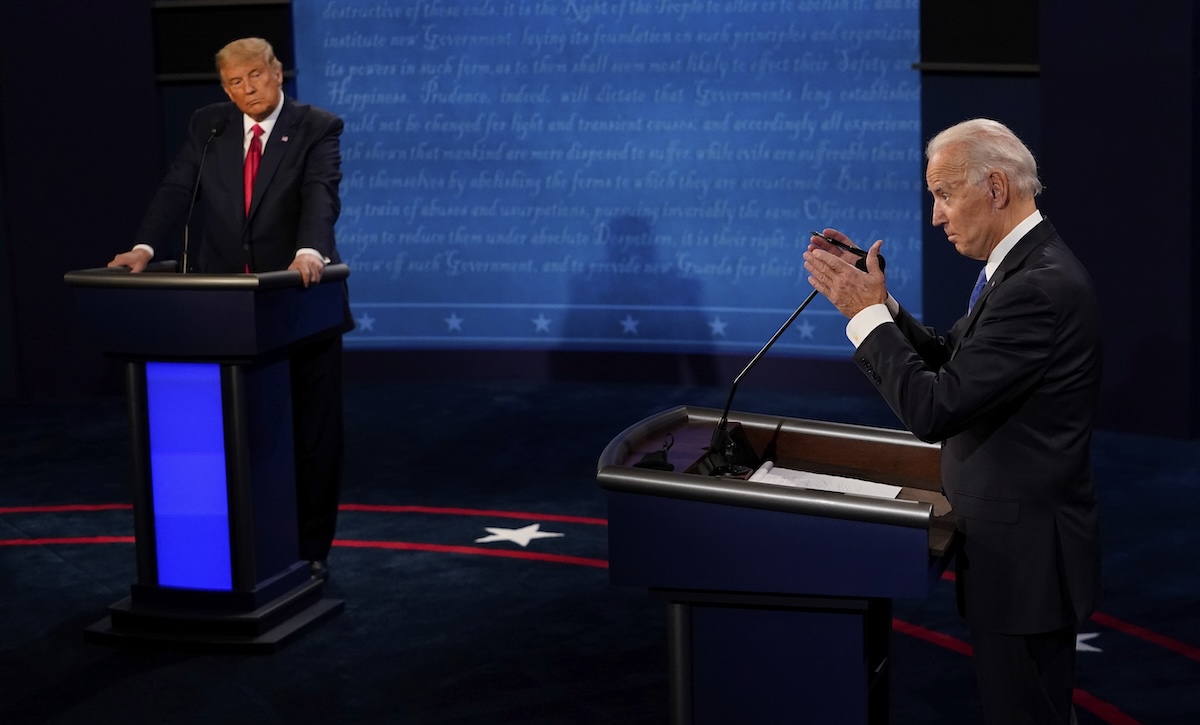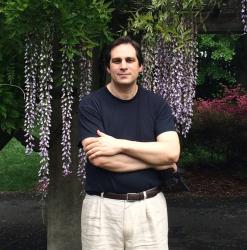Back in the 1970s, Sixty Minutes had a regular feature called Point/Counterpoint, which came at the end of every show. Each week there would be a different topic. Journalist Shana Alexander would present a standard-issue “liberal” version of the argument while James J. Kilpatrick assumed the “conservative” side. Although the sparring partners sniped at one another, they often taped their remarks separately. This became obvious to viewers one Sunday when they addressed the subject of abortion. Mistakenly, each assumed that the other was an opponent and offered a defense of it. This was possible because there was still some fuzziness at the time about what were presumed to be the designated liberal and conservative positions. Indeed, going even further back, when George H.W. Bush ran for Congress as a Republican in Texas in 1966, he set a special emphasis on his support for “family planning.”
That so many left-wing and right-wing opinions seem not to reflect any real underlying philosophy is the subject of Hyrum and Verlan Lewis’ new book The Myth of Left and Right: How the Political Spectrum Misleads and Harms Americans. The authors, college professor brothers, believe that most positions on current issues in America are postures founded in a desire for identity within paired political subcultures: the two parties and their respective cheering sections in the press and the public. They make their case in a book that is appealingly pointed and brief. (Aside from the endnotes, the text is just 100 pages.) There is much else that is praiseworthy about this slim volume. Unlike most academics, they present their ideas in a clear, lively way, and they offer a surfeit of examples for their ideas.
These coalesce around a belief that partisan impulses are not in most cases guided by fundamentally different ideas of what the country should be. Instead, they see the various policy positions that have been adopted by conservatives and liberals as arbitrary takes driven by tribalism. Perhaps this is because the country is increasingly secular and its intermediary institutions have fallen away. Thus, in the absence of strong religious attachments and of local and fraternal organizations that once held sway, people are increasingly looking to partisan politics and ideology as a means by which to craft an identity. The Lewises think that this is profoundly destructive and that these instincts stand in the way of solving basic problems—or even of operating the government effectively.
The recent conflicts in Congress over a short-term funding bill appear to exemplify this as factions on both the right and the left worked to prevent its passage, aware, though, that this would lead to a stoppage of many basic government functions. The obstructionism was displayed by right-wingers like representative Matt Gaetz, who voted against the bill, and leftist Congressional Black Caucus member Jamaal Bowman, who pulled a fire alarm moments before the vote was to take place, seemingly intent on preventing his fellow congressmen from voting (although he insisted otherwise).
As further evidence for their thesis, the authors point to the suspicion once exhibited by liberals for government surveillance and an expanded national security state and how it has recently spread to many on the right. Alongside this, right-wingers have grown increasingly anxious about vaccine safety, adopting a skepticism once associated with a certain brand of anti-government/anti–Big Pharma leftism. That hostility to vaccines, which was previously shown in the measles outbreaks within liberal enclaves, where Volvos could be found parked side by side outside the local Whole Foods stores, is now most often seen among F-150 pickup owners in Oregon and the Dakotas. They point out as well that, though religious devotion is more strongly identified with the Republican Party and the right, during the Populist era it was more characteristic of the left and was an essential feature of William Jennings Bryan’s Democratic political campaigns. Even high tax rates, a balanced budget, and interventionist views of foreign affairs, they observe, have swung back and forth between what were seen as left-wing and right-wing.
The Lewises offer several remedies for this. The first is simply to acknowledge the problem. A second needed response is to “go granular”: to ask more probing questions about what the actual basis for certain ideological preoccupations is. Finally, they say we must stop branding positions as “left-wing” or “right-wing,” given that the terms so often appear to be arbitrary.
There is a great deal to what the authors are saying, and this is a book that deserves attention and thoughtful responses. It seems to me, however, that there are two serious problems with it. The most obvious is that it provides little discussion of what—more than anything else—is driving the discontent in the country: rising inequality. Between 1967 and 2019, household income grew almost four times as quickly for those in the top fifth of American households as those in the bottom fifth, and the difference was even significantly greater between those in the top 5% in income and those in the bottom 20%. Simply put, the rich really have been getting richer even as the condition of the poor has largely stagnated.
That is what is behind the seemingly curious phenomenon of voters who say they like Donald Trump and Bernie Sanders. After all, both are hostile to the liberal establishment and focused on offering answers to the problem. Necessarily, each sees himself as a champion of the working class, and recent Republican success in appealing to these voters has been based on Trump’s economic agenda. This has two components: reducing imports through tariffs and cutting down on the legal and illegal immigration of relatively unskilled workers. The Trump approach, of course, has the virtue of addressing the matter through real economics, and it’s no accident that the first three years of his presidency saw the first diminution of American income inequality in decades. Sanders’ socialist ideas, by contrast, represent the plan of someone genuinely concerned about the issue but unable to grasp basic economics.
So, while we may say that liberalized trade has traditionally been a right-wing or Republican position, it is not the case that the viewpoint of the Republican Party has randomly flipped. Nor has hostility to Roe vs. Wade always been exclusively partisan. Similarly, the Democratic concern with climate change reflects the technocratic orientation of the more educated part of its voting base and an actual increase in global surface temperatures. In each case, the parties are trying to forge voter coalitions. In order to do that, they identify positions that appeal to those voters. With respect to the Republican shift on international trade and the Democratic focus on fossil fuel usage, the constituencies and the circumstances changed. The parties have merely been following the votes.
On occasion, the authors can also be loose in their presentation of the facts. For example, they spend several pages on the 1964 presidential race between Lyndon Johnson and Barry Goldwater. In the course of this, they make much of Goldwater’s support for legal abortion and gay rights. But Goldwater advocated for neither position when he ran for the presidency. Moreover, while he did speak out for gay marriage in the 1980s, it’s hard to believe that he would ever have approved of “gender reassignment” surgery for minors. Yet this is now classified as a fundamental part of the gay rights cause. In trying to persuade the reader, they can be guilty at times of exaggeration and overstatement.
This isn’t to suggest that much of what they say isn’t vitally important. It is. Instinctive partisanship is a growing problem. To understand this we need only consider the extremism that has characterized European politics over the past century. Less religious as it has long been, it has also become more radicalized, and this is undoubtedly a large part of the reason why France, Italy, and Spain still have significant Communist and Fascist parties. That is not a future that we want for ourselves.

